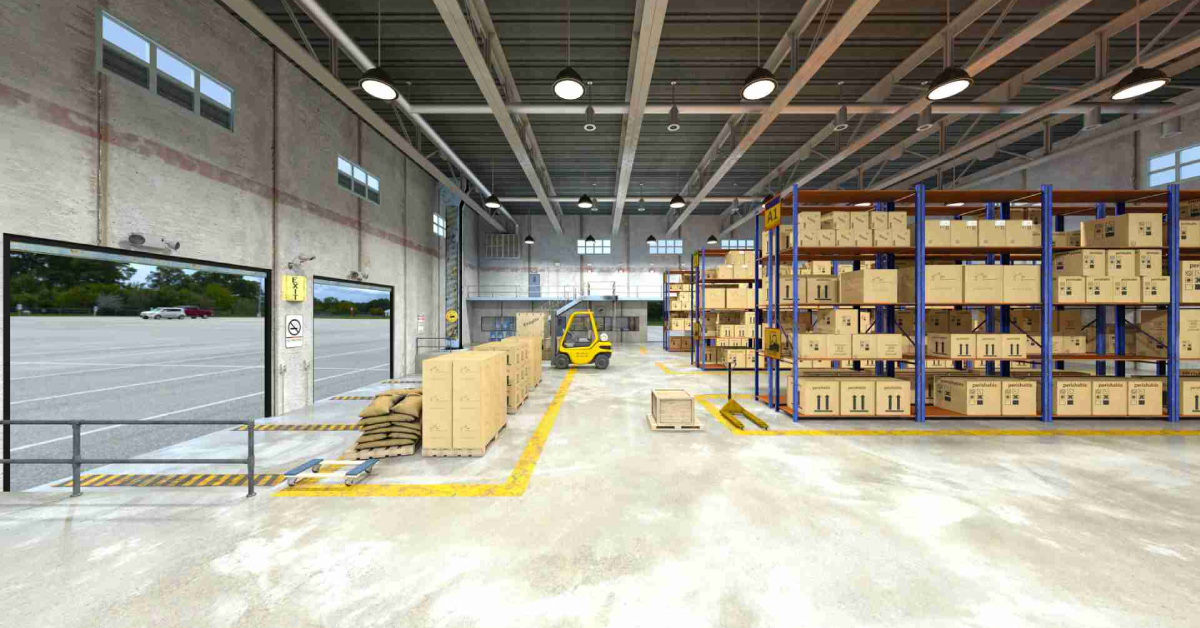Introduction: The Illusion of ‘Good’ Growth
Growth is a word that excites every business leader. It signals momentum, opportunity, and progress. When revenue climbs, new clients come in, and your team starts expanding, it feels like everything is going right. But beneath the surface, that very growth can start to strain the systems you once relied on.
Many small to mid-sized businesses (SMBs) get caught in the euphoria of expansion, only to realize later that their internal operations, tools, and processes haven’t evolved at the same pace. The result? Increased errors, delays, frustrated employees, and disappointed customers.
This scenario is what we call the “Growth Trap” — a situation where growth becomes unmanageable due to the lack of scalable infrastructure. In this blog, we’ll explore what the Growth Trap really looks like, why expanding too fast without ERP leads to long-term operational damage, and how ERP systems can provide the foundational support you need to scale sustainably.
What Is the Growth Trap?
The Growth Trap is the point where a company’s increasing volume of business overwhelms its ability to operate efficiently. It’s the hidden danger that often catches businesses by surprise. Everything seems to be working—until suddenly, it isn’t.
You may start seeing more order errors, delayed shipments, team burnout, and siloed communication. These are not isolated issues; they are the ripple effects of growth without structure.
For example, think of a startup that begins with a few dozen customers. Initially, spreadsheets work fine for managing inventory and finances. But as the customer base expands into the hundreds or thousands, and the business adds more products, warehouses, or staff, those same spreadsheets become a liability. Information gets lost. Processes become inconsistent. People start making decisions based on outdated or incomplete data.
Common symptoms of the Growth Trap include:
- Poor inventory management that causes out-of-stock or excess inventory.
- Lost or late shipments that irritate the customer base.
- Employees wearing too many hats, which causes burnout and mistakes.
- Financial forecasting based on conjecture rather than real-time data.
- Disparate departments that are siloed and unaware of the business as a whole.
The Growth Trap doesn’t just slow growth. Ignoring these systems of growth will create a negative impact on your brand, finances and employee motivation.
Warning Signs You Are Scaling Too Fast Without ERP
Every department experiences the negative impacts of uncontrolled growth differently. Let’s break down the contributing factors that tell you your company might be outgrowing its systems:
1. Operations: If things are no longer running smoothly and efficiently, it’s a clear indicator that your business is in distress. Your manual processes that had been working for you are now failing.
- Manual workarounds are the new reality. Teams are relying on email, spreadsheets or verbal communication to communicate tasks.
- Order mistakes are escalating. Incorrect shipments, duplicate orders, and lateness happen way too often.
- Multi-location chaos. When you have multiple warehouses or offices and no integrated system, it’s just chaos.
2. Finance: Your finance team starts struggling to keep up as transactions multiply and complexity increases.
- Delayed financial reports. Closing the books takes days or weeks longer because data is scattered.
- Inaccurate cash flow projections. You can’t see how much cash is actually available, or when key payments are due.
- Forecasting becomes unreliable. Growth projections are made on assumptions, not data-driven insights.
3. Sales & Customer Service: Customer experience suffers when sales and support aren’t aligned with real-time business operations.
- Disconnected systems. Your CRM doesn’t talk to inventory or finance, leaving teams in the dark.
- Customer expectations aren’t met. Promised delivery times slip, support teams lack order visibility, and frustration builds.
- Slow manual processes. Generating quotes, sending invoices, or processing returns takes too long.
4. IT & Data: Your tech infrastructure may be a patchwork of tools that don’t scale.
- Too many tools, none integrated. You’re juggling separate platforms for accounting, inventory, CRM, HR, etc.
- Spreadsheet overload. Teams rely heavily on Excel for key decisions, increasing the risk of error.
- Security concerns. Disparate systems increase vulnerability to cyber threats and data loss.
The Hidden Costs of Scaling Without ERP
On the surface, everything may look fine. Orders are coming in, revenue is growing. But beneath that success lies a growing list of problems that quietly chip away at your profitability.
- Burnout and turnover. Employees spend more time managing chaos than doing meaningful work. Over time, the best people leave.
- Damaged customer relationships. Customers expect consistency. When your business can’t deliver, even loyal buyers begin to walk away.
- Inventory mishaps. Overstocking drains cash. Understocking loses sales. Both kill margins.
- Tech debt. As your business patches one system to another, you accumulate technical debt that’s costly to maintain.
- Missed opportunities. Without clear visibility into performance, it’s hard to pivot quickly or take advantage of new trends.
What makes these costs dangerous is that they’re cumulative and often hidden. You may not feel the full weight of them until they cause a serious disruption.
How ERP Acts as the Backbone for Sustainable Growth
Systems known as Enterprise Resource Planning (ERP) provide you with unification and simplify your operations. They have the ability to not only help you catch up with growth, they also empower you to handle more growth without being totally consumed.
1.Centralized Data for Better Decisions: An ERP system will allow every department to only view the most current, real-time data. Sales and finance and inventory and HR data have alignment.
- There is no duplication of data entry, and no reconciliation of data.
- And your leadership can now access KPIs at a moment’s notice across all operational units.
2.Automated, Scalable Workflows: ERP automates business processes to eliminate repeating tasks and streamline core business processes.
- Sales orders process from quotes to fulfillment seamlessly.
- Invoices automatically go into the process and are automatically generated and sent.
- You can build your approval chain and alerts so you don’t have to check in constantly.
3. Inventory and Supply Chain Management: ERP provides total visibility of your inventory, tracking all that is happening in the supply chain landscape.
- Monitor current stock levels in real-time in all locations
- Auto-reorder based on defined demand
- Recognize critical bottlenecks before they become overwhelming.
4. Financial Accuracy & Audit Preparedness: ERP makes financial data consistent.
- Take instant and accurate reports for budgeting and forecasting
- Facilitate compliance with audit trails and financial controls.
5. Scalable to Support Multi-Entity Growth: If you’re expanding into new regions or business units, an ERP solution will grow with you.
- Manage multiple legal entities, currencies, and tax jurisdictions
- Provide consolidated reporting while being distinct to each entity.
Case Insight: Before & After ERP Implementation
Imagine a mid-sized beauty brand that gained viral attention on social media. Orders surged by 300% within two months. Exciting, right? But their systems couldn’t keep up.
- Shipments went out late or with the wrong items.
- Customers flooded their support team with complaints.
- Their finance team couldn’t track revenue accurately because data was everywhere.
After implementing ERP:
- They unified sales, inventory, and finance in one platform.
- Order fulfillment time dropped by 40%.
- Inventory accuracy increased dramatically, reducing returns.
- The finance team closed the books 3x faster.
ERP turned what could have been a disaster into a launchpad for further growth.
When Is the Right Time to Implement ERP?
It’s simple to believe that ERP is only critical when you’re large enough. However, the reality is that ERP is most beneficial before your business hits that tipping point.
Here are indicators that it’s time to look at ERP:
- Expanding to multiple locations or selling via channels.
- Teams are spending excessive amounts of time on manual tasks.
- You need 3-4 different tools in order to manage day-to-day operations.
- Leadership is often left guessing management performance since they lack real-time insight.
Choosing to implement ERP when you can put in the work up front will allow you to be in control. And you will be able to grow on your own terms, instead of always responding to the chaos.
ERP as a Strategic Investment, Not an Expense
Yes, there are up-front costs and a learning curve when implementing ERP. However, long-term gains are obvious and quantifiable.
- Improved productivity: Teams do not need to dedicate time to fixing things and can spend time on higher-order strategic work.
- Improved margins: Automation eliminates waste and decreases errors.
- Improved decisions: Your decisions are based on facts or measurements not guesses or assumptions.
- Scalable capacity for growth: Your systems become elastic instead of an impediment to growth.
Thinking of ERP as an investment means you don’t just look at it as a way to solve today’s innovations, but as your infrastructure for future success.
Key Takeaways & Next Steps
Experiencing rapid growth can be an exciting and rewarding experience. Growth, though, can be risky time for businesses depending on the systems and processes you have in place. The Growth Trap is real and can be a silent destroyer of your success from the inside.
By taking the time to recognize the signs of the Growth Trap early and installing an ERP system, you will create a base for your enterprise to leverage and scale while being under the duress of stable, high growth.
Don’t wait until you see cracks. Now is the time to build the sturdiest structure so that growth is your greatest asset and not your gravest risk.
Take the First Step Towards Transformation
Effectively manage your financials, multiple channel inventory, and production workflows with our award-winning ERP.
Let Versa Cloud ERP do the heavy lifting for you.
Do Business on the Move!
Make your businesses hassle-free and cut the heavyweights sign up for the Versa Cloud ERP today!!
Join our Versa Community and be Future-ready with us.









